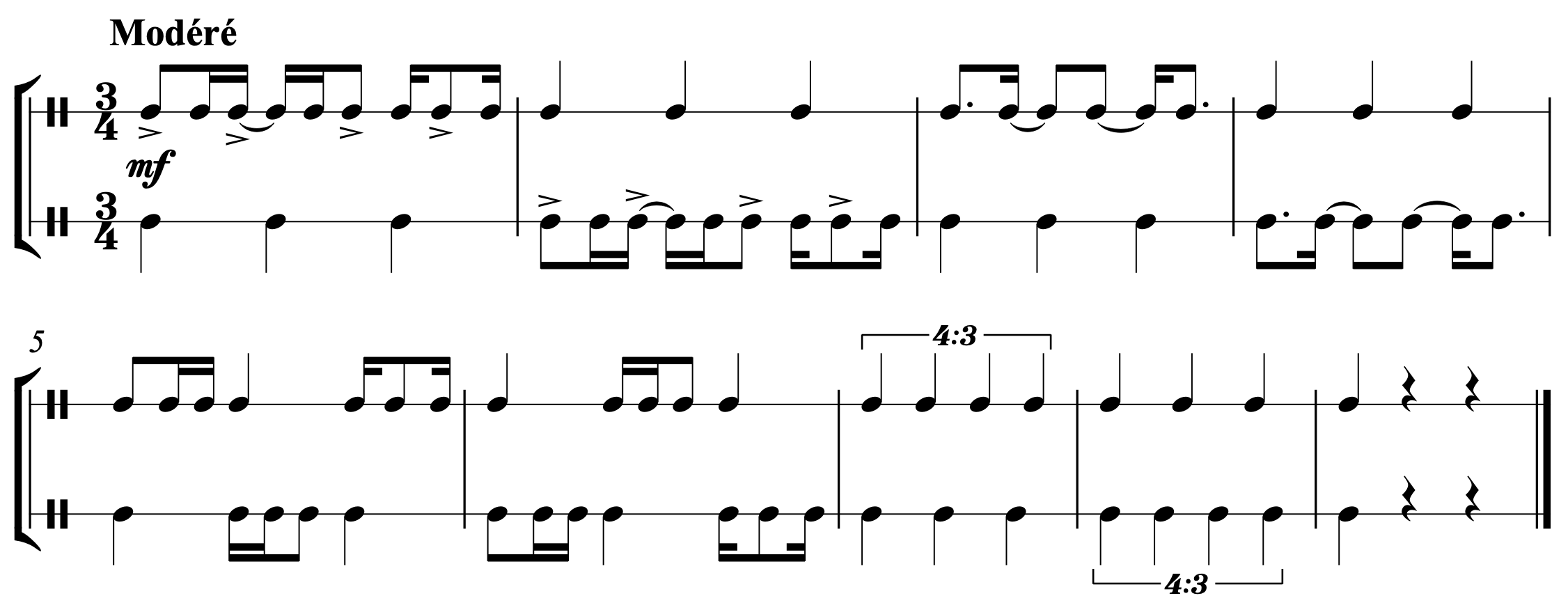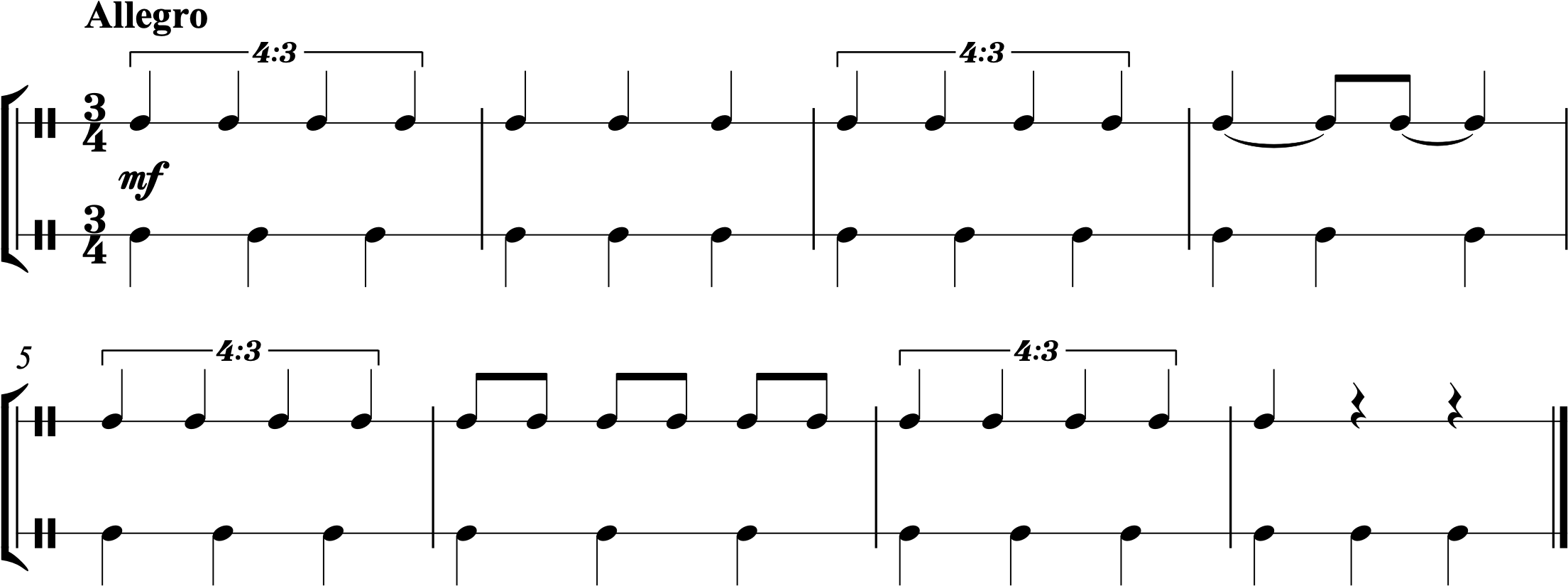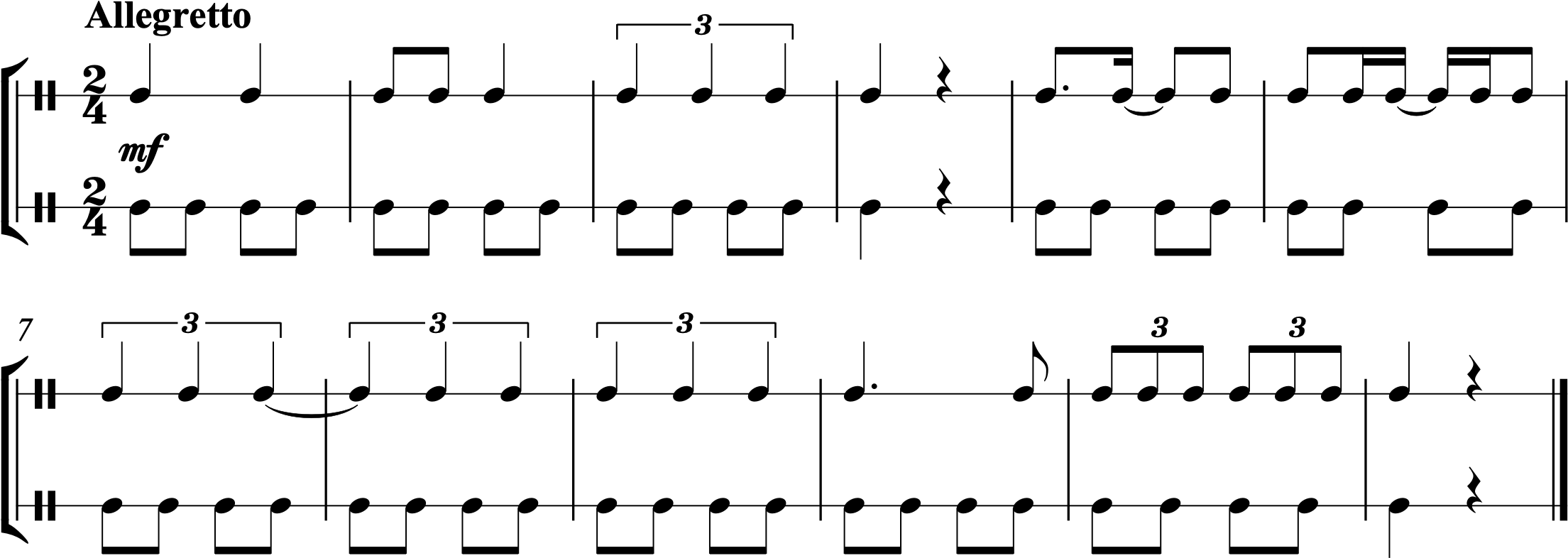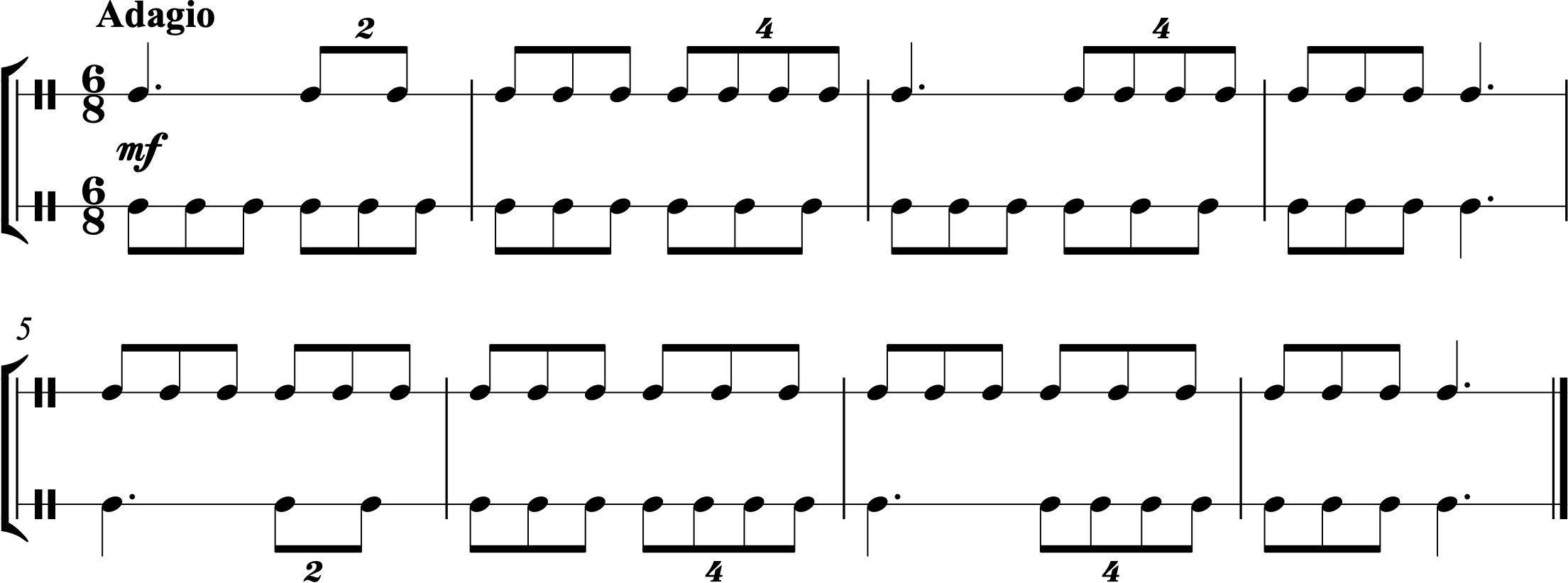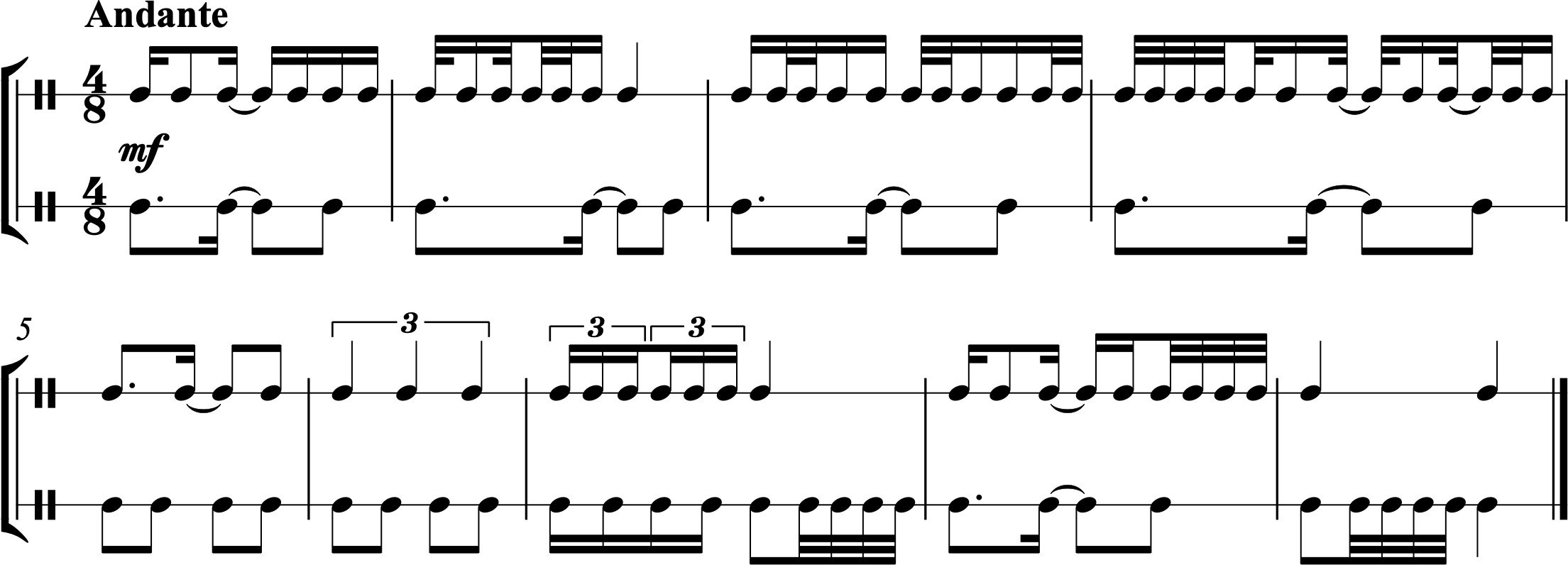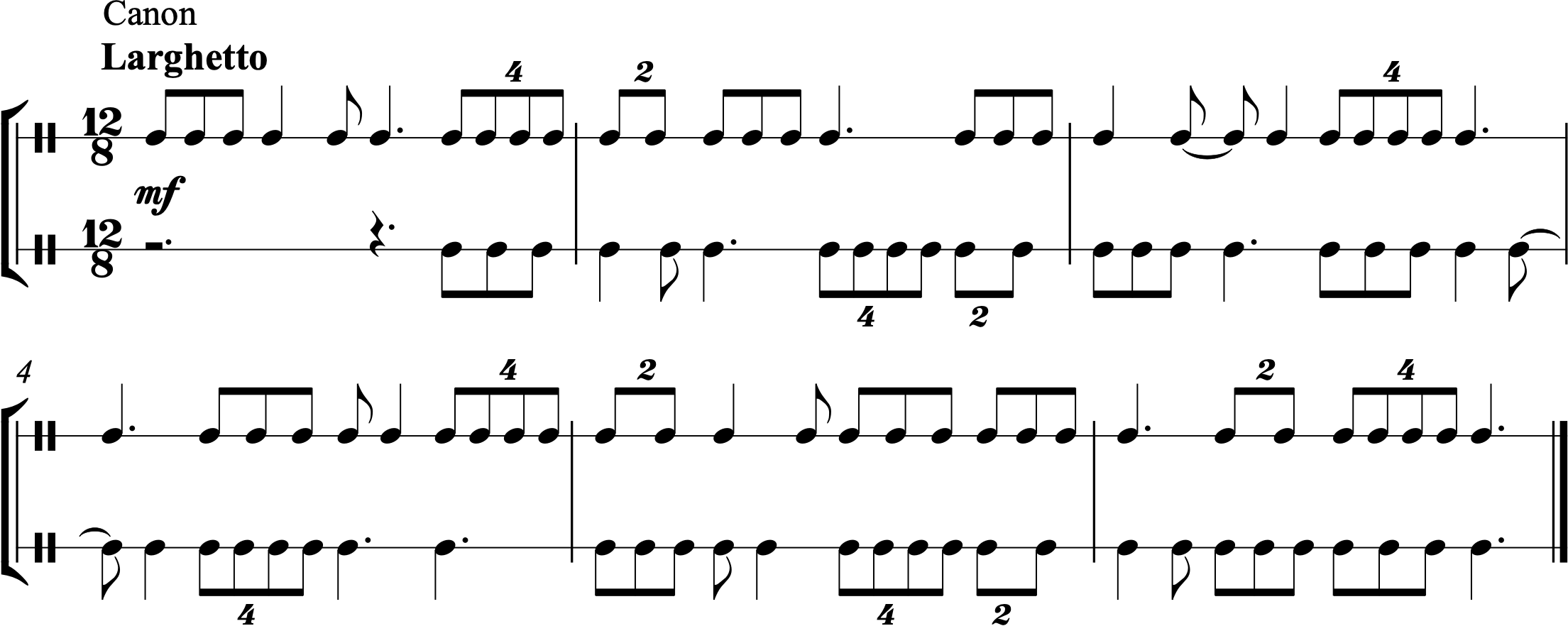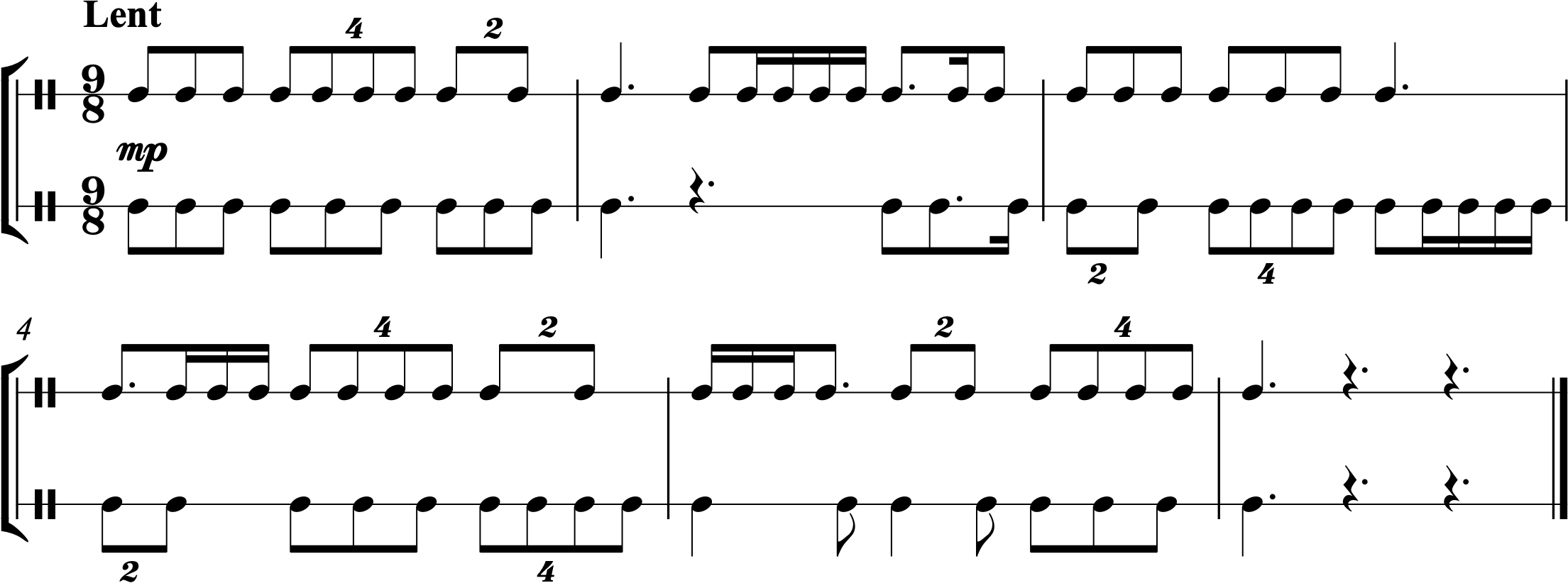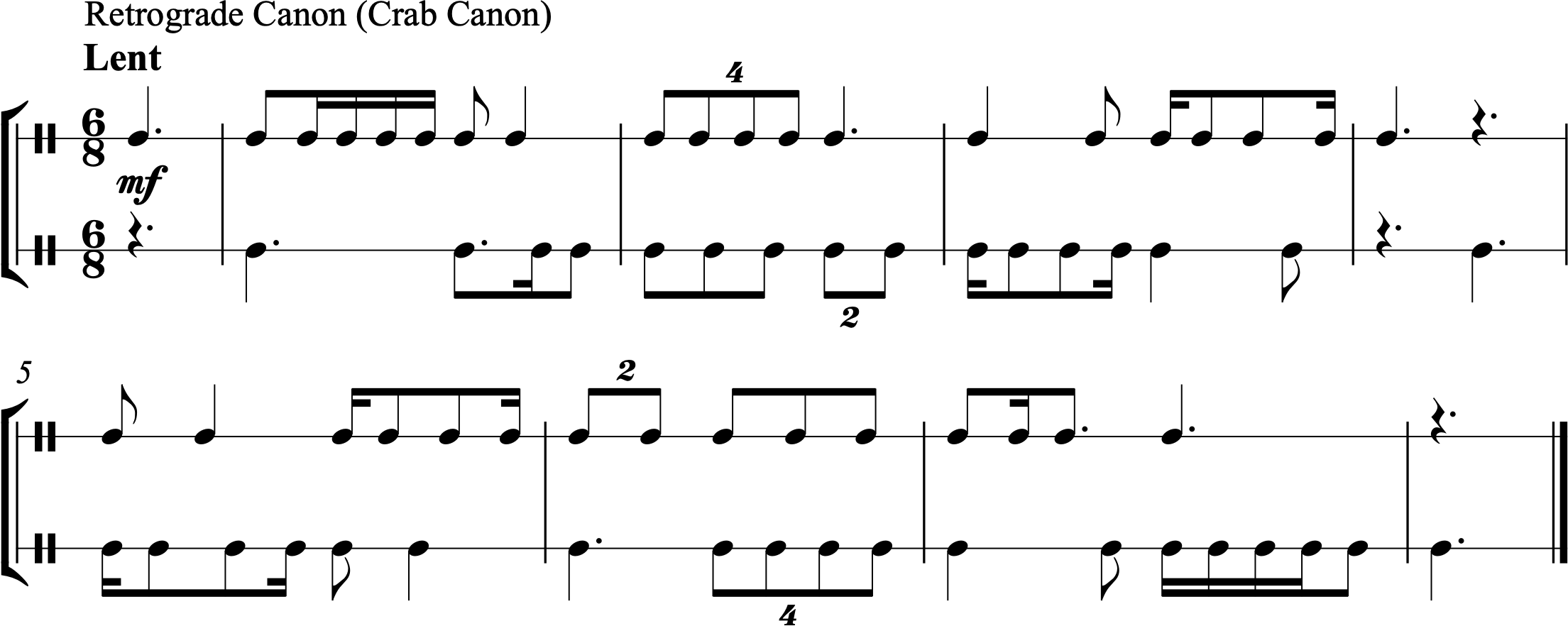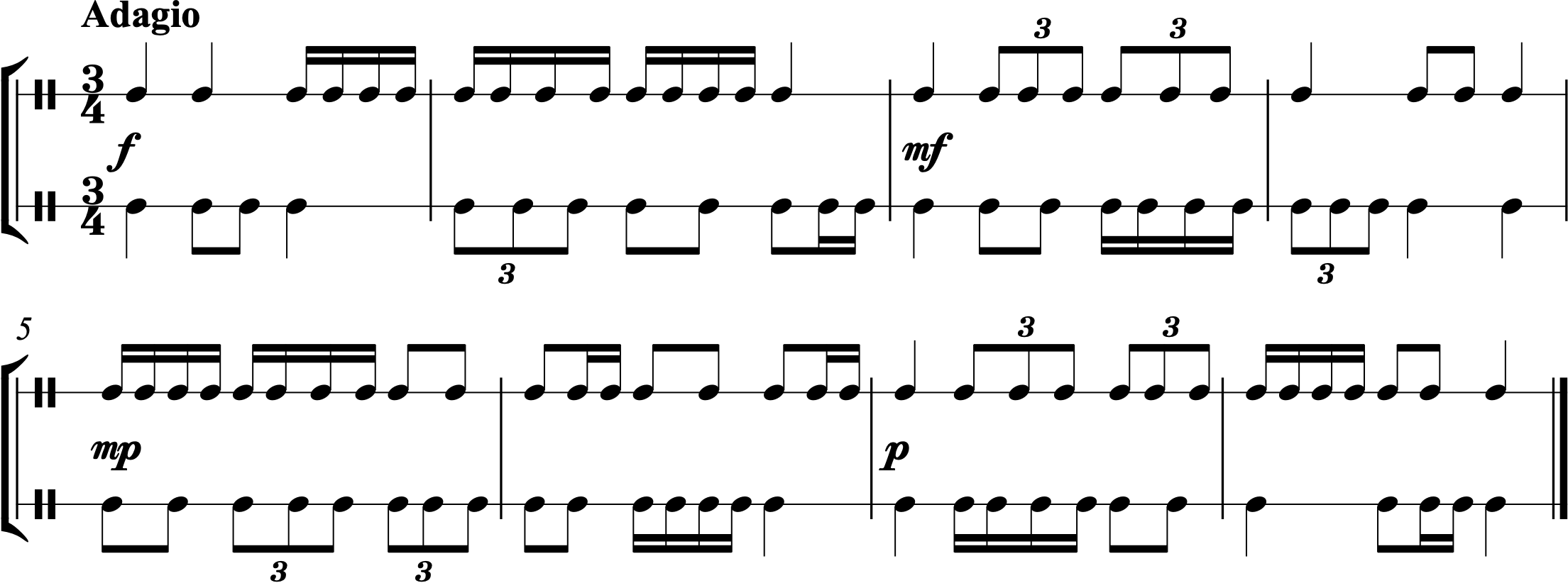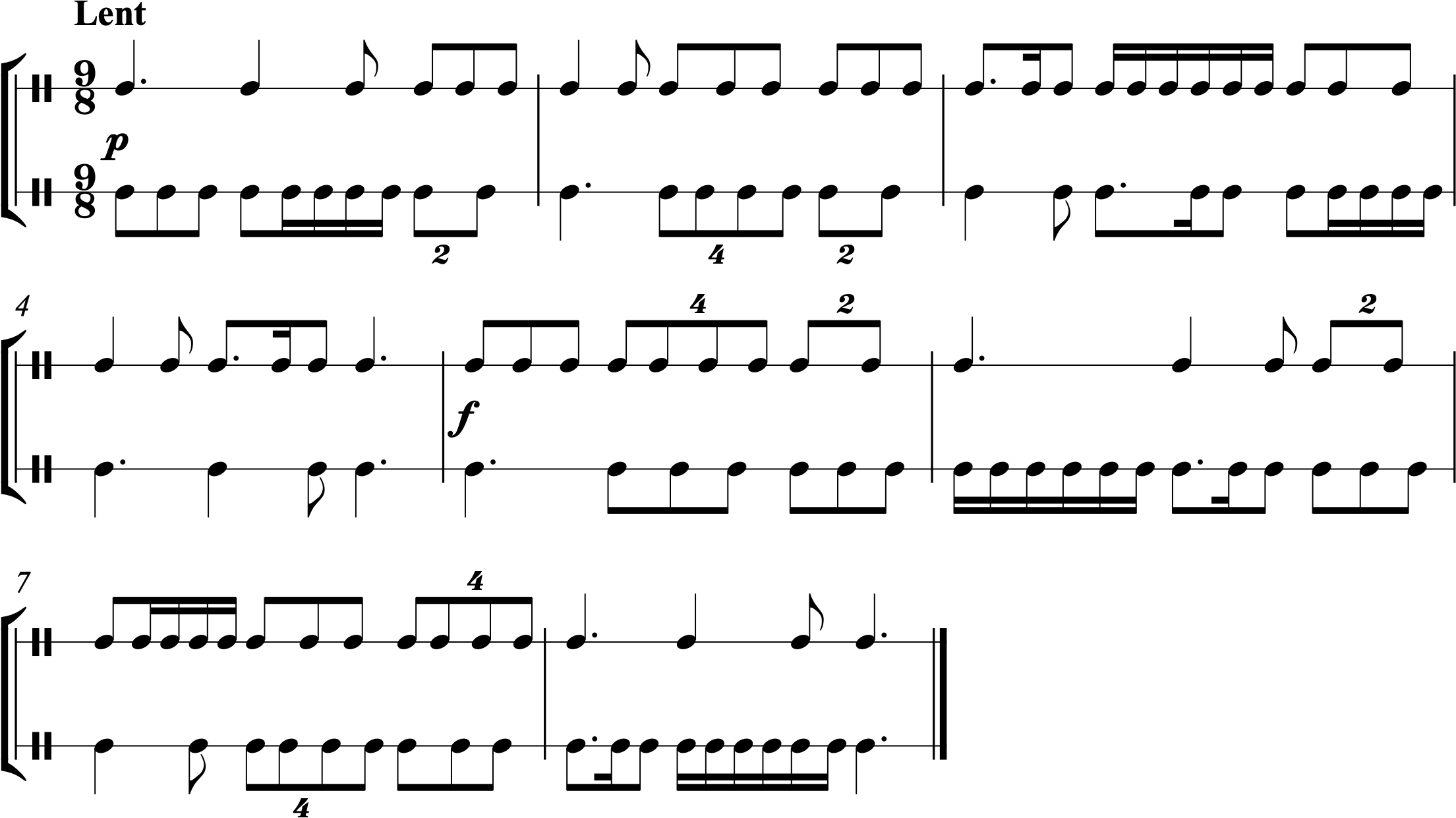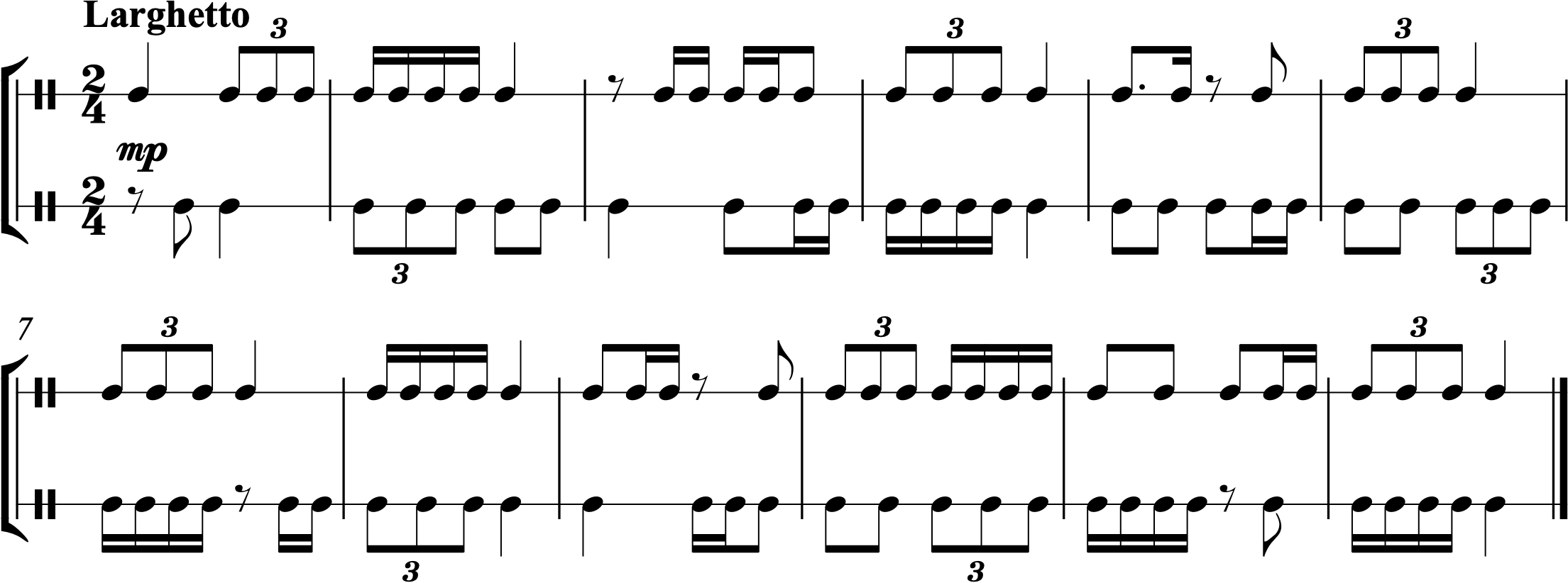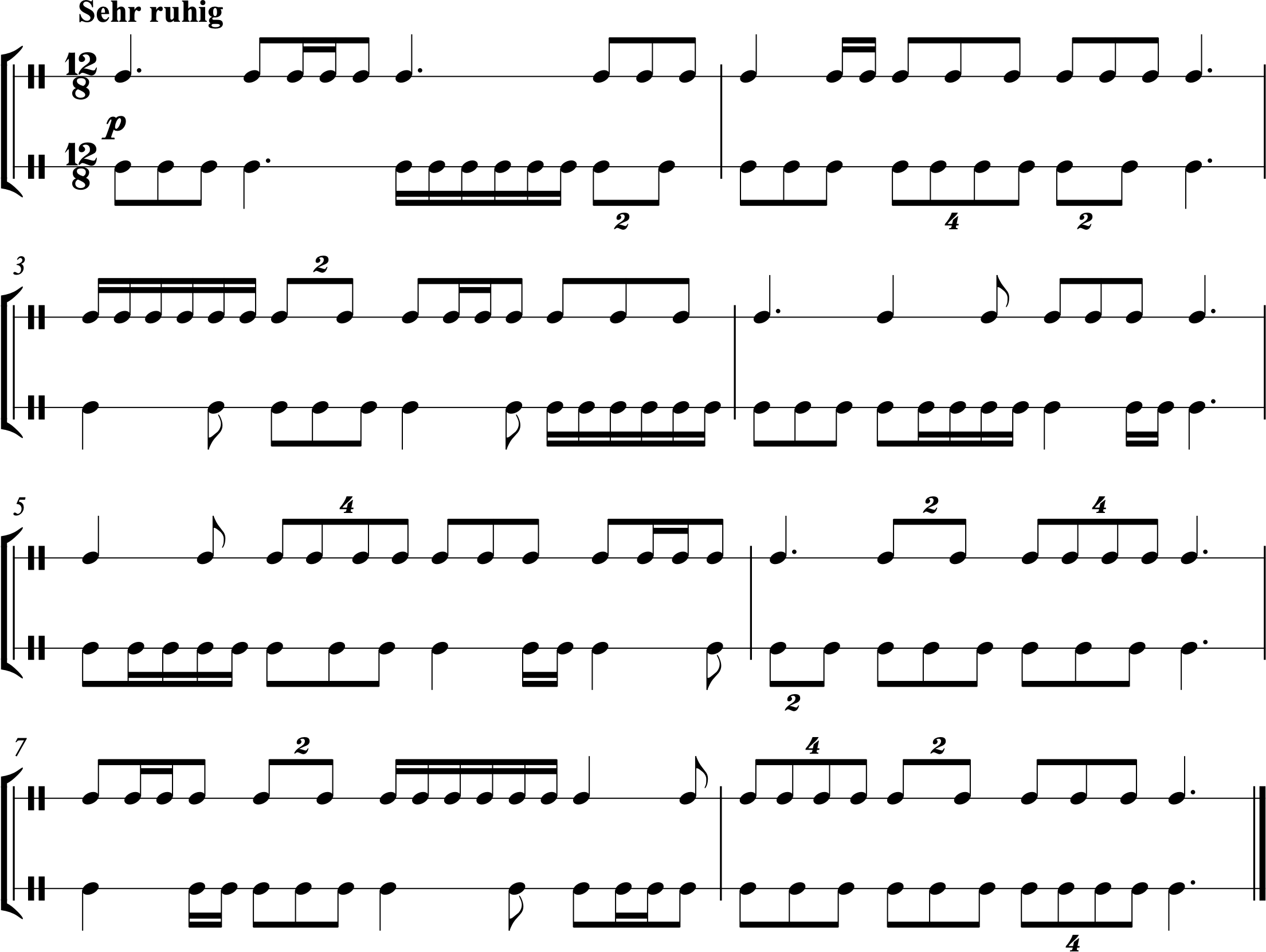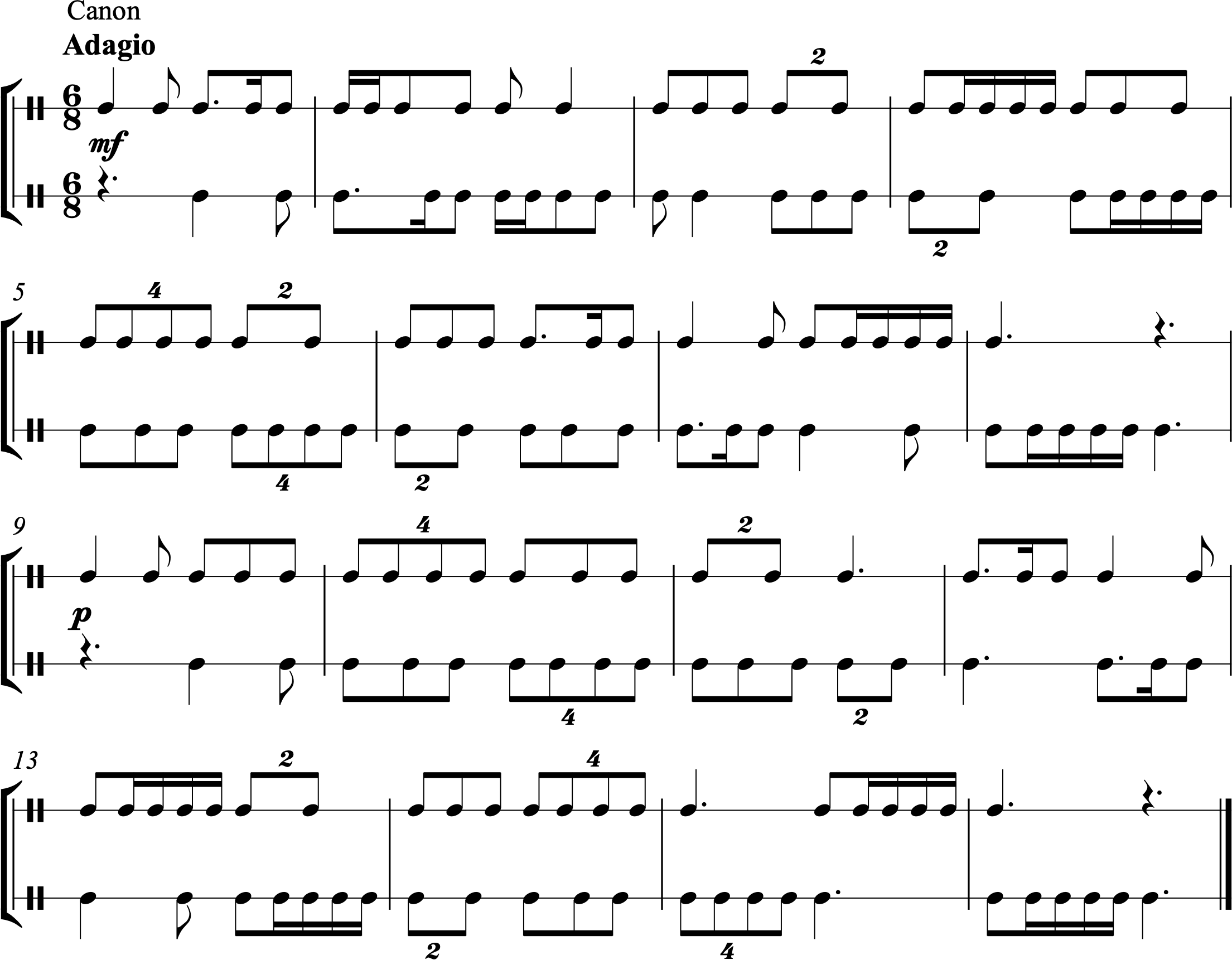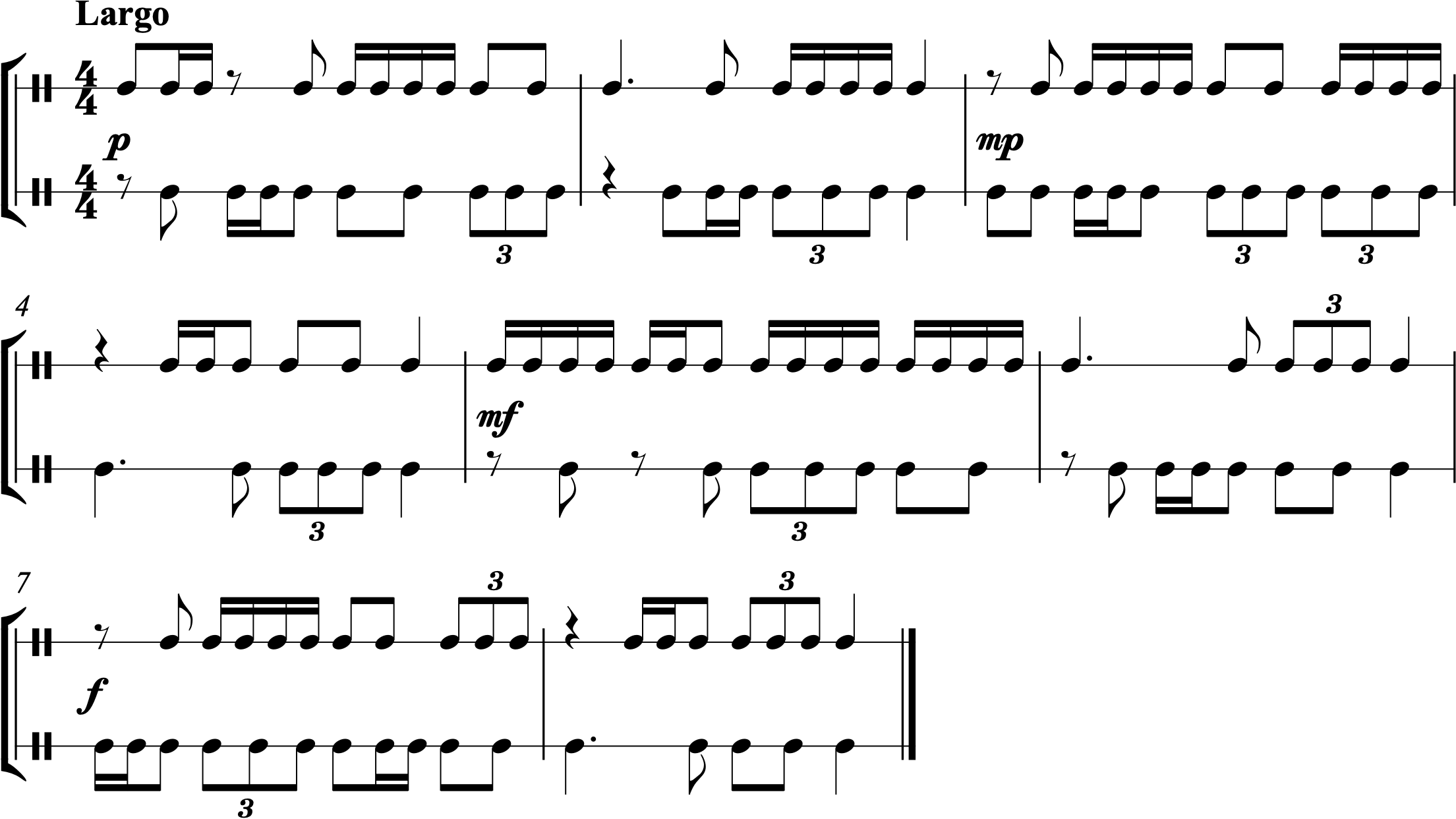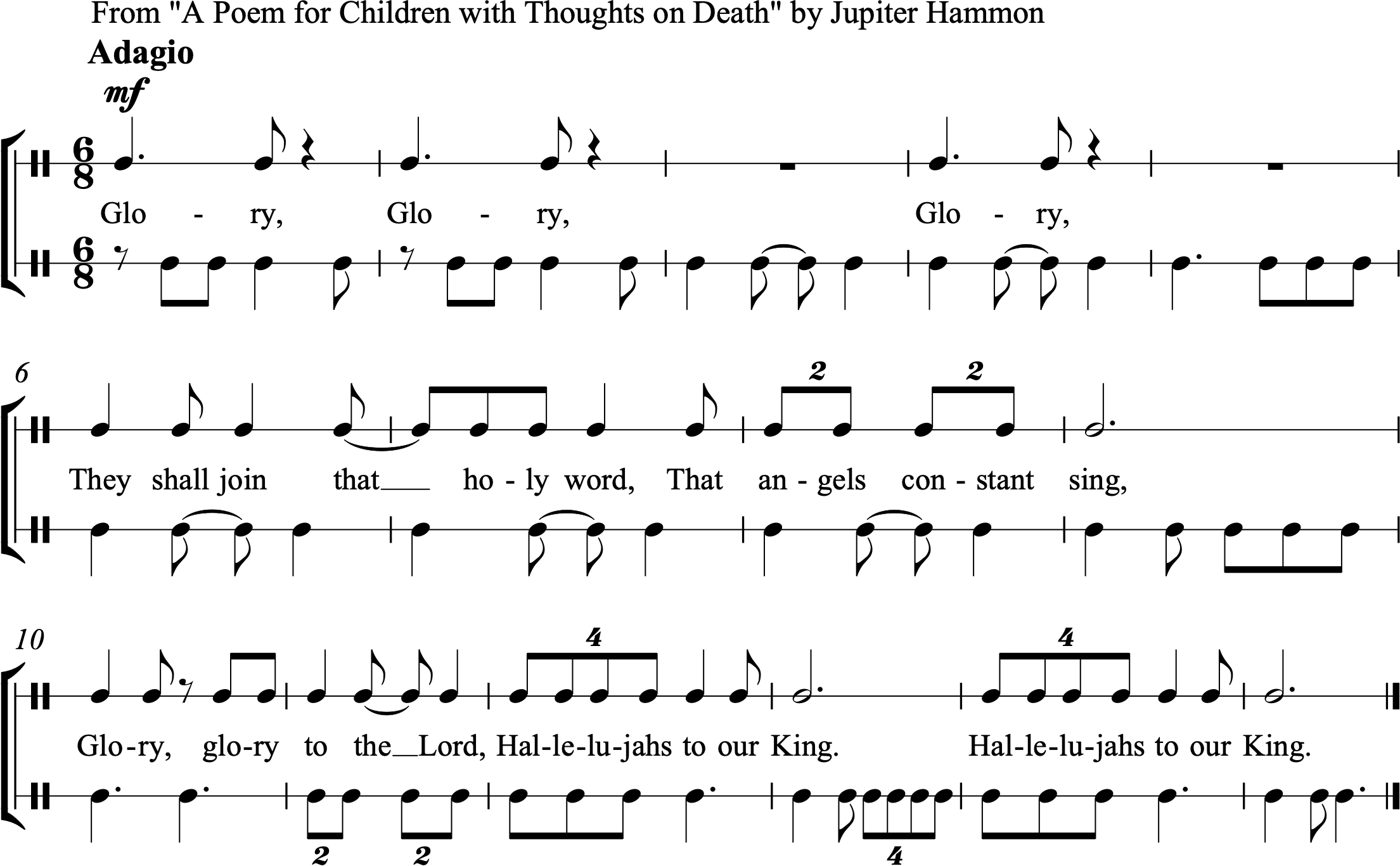Chapter 20: Polyrhythms—three against four and four against three
About This Chapter
About This Chapter: In Chapter 12, we explored the two-against-three and three-against-two polyrhythms. In this chapter, we’ll turn our focus instead to the three-against-four and four-against-three polyrhythms.
In measure 1 of the example below, the bottom line features the normal subdivision of the beat into four equal parts (“1 e & a”). The top line puts a division into three equal parts (“1 la li”) against these sixteenth-note subdivisions, creating a three-against-four polyrhythm. In measure 2, the opposite happens: the normal division of the beat is into three equal parts (“1 la li”), but we put a division into four equal parts against it (“1 e & a”) to create a four-against-three polyrhythm.
So what do these sound like together? It may help you to conceptualize the four-against-three/three-against-four polyrhythms by seeing a visual representation. The grid below represents a single beat that has been divided into twelve equal parts. The grey boxes in the top line represent four evenly spaced attacks, while the grey boxes in the bottom line represent three evenly spaced attacks. Notice how the attacks in columns four and five and in columns nine and ten happen right in a row.
It may also be helpful to associate a phrase with the composite rhythm created by the combination of three and four. The examples below present two different options for syllables. The first phrase works particularly well for examples in which the division into three is accented, since the syllables for those three attacks (“Pass,” “bread,” and “but”) are the naturally accented ones in that phrase. The second phrase works better for examples in which the division into four is accented, since the syllables for those four attacks (“Pass,” “but,” “to,” and “left”) are the naturally accented ones in that phrase.
Section A—Three-against-four and four-against-three polyrhythms
Practice
1.
2.
3.
4.
5.
6.
7.
8.
9.
10.
11.
12.
13.
14.
15.
16.
17.
18.
19.
20.




